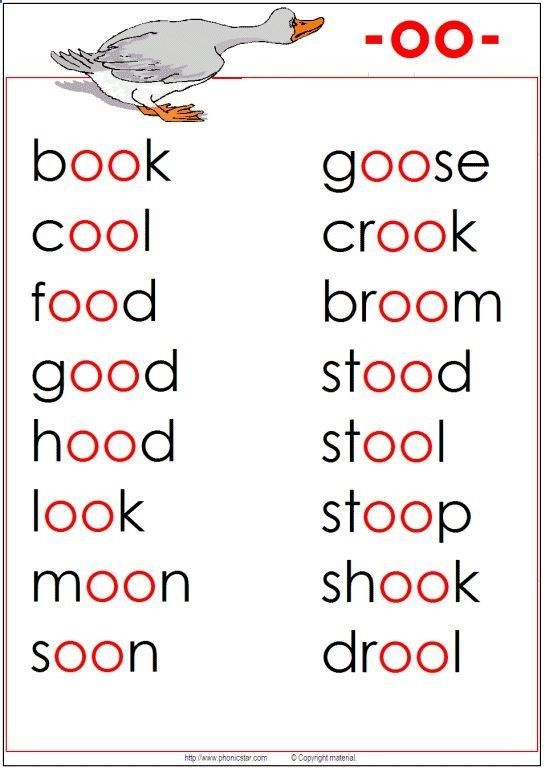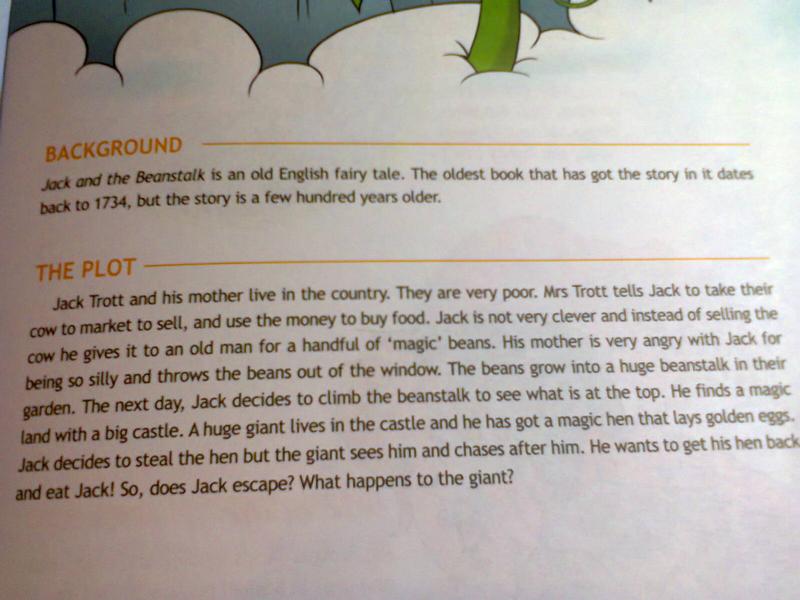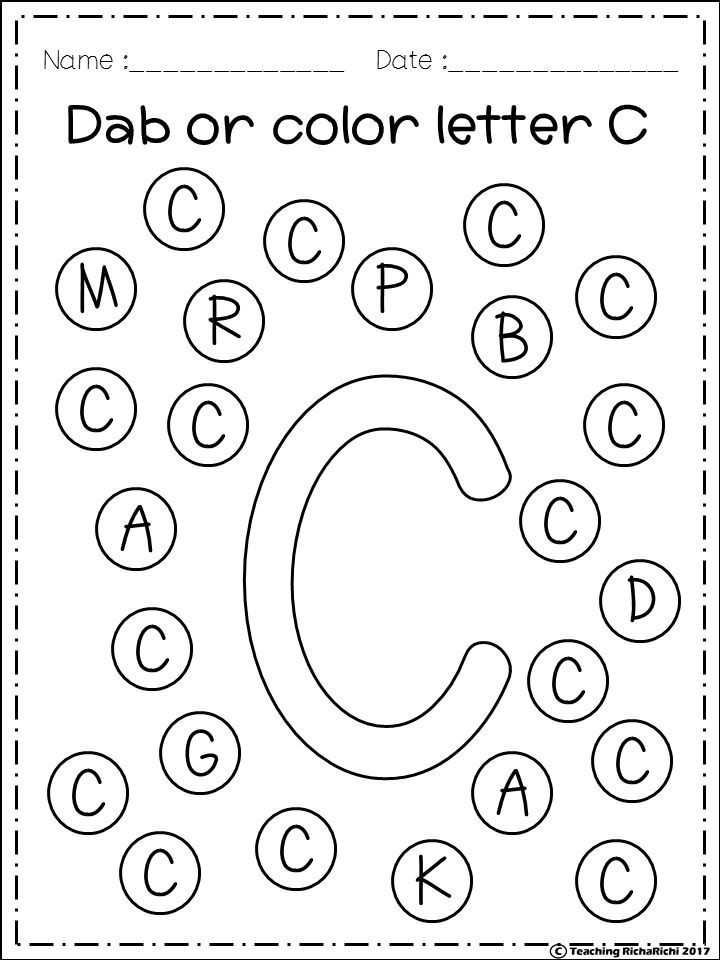Stories with fairies
Top 10 Fairies From Fairy Tales and Literature
474 shares
How do you like your fairies? Fun and sparkly? Dark and dangerous? Big? Small? Wings? No wings? Famous fairies have appeared in many guises over the centuries, from oral folklore to literary creations.
In my short story collection Tales from the Hidden Grove, we encounter a fairy milkman with grand ambitions, as well as a more serious tale about what happens when children become too old for Fairyland.
To celebrate the release of Tales from the Hidden Grove, here are ten of my top famous fairies from fairy tales and literature. What are yours?
FAMOUS FAIRY CHARACTERS FROM FAIRY TALES AND LITERATUREJulia Roberts as Tinker Bell in Hook. Credit: Amblin Entertainment/TriStar Pictures
1. The Fairy Godmother (Cinderella)One of the most famous fairy book characters is the Fairy Godmother.
Cinderella is allegedly the world’s favourite fairy tale, with hundreds of versions around the globe. Not all feature the fairy godmother, but she is in the version most of us know best and remember from our earliest days, whether from books, film, pantomime, or ballet.
And I’m sure we’ve all thought how wonderful it would be to have a fairy godmother who would suddenly appear to lift us from our life of drudgery with the words: “You shall go to the ball!”
2. The Blue Fairy (Pinocchio)Credit: ABC Studios/DisneyGenerally known as the fairy who grants Pinocchio’s wish to become a real boy, provided he can be good.
In Carlo Collodi’s original tale, she first appears as a blue-haired child, then as a mother figure, and finally as ill and frail as an aged parent might be. It is Pinocchio’s loving care for his mother, the Fairy, and for his father, Geppetto, that finally earns him the right to become a real boy.
3.I think the reason we all like Tinker Bell is because she is naughty! Drawing on the tradition of the mischievous fairy, JM Barrie makes her insanely jealous of Peter Pan’s affections.
She pulls Wendy’s hair and even tricks Tootles into firing at her. But she shows her heroic side when she drinks the poison intended for Peter and has children all over the world clapping their hands and saying: “I do believe in fairies!”
Not bad for someone who began their life onstage as just a light and a tinkling bell.
4. The Wicked Fairy (Sleeping Beauty)Photo: DisneyCall her what you will – Maleficent, Carabosse – this is the fairy we learned to dread in our cradles. Woe betides anyone who fails to send her a party invitation!
And – oh! – that awful moment when she lures our heroine into touching the spindle! But perhaps she has good reason for her behaviour?
As we will see later, some fairy stories have their roots in myths of ancient goddesses. And you don’t want to cross one of those!
Susanna Clarke drew on a darker, folkloric tradition of fairies when she created her epic tale of Regency magicians at cross purposes.
In human terms, we are told, the nameless fairy at the heart of the tale is barely sane. He genuinely believes he is doing his victims a good turn by abducting them to join him in endless, dreary balls under the earth.
Wonderfully portrayed by Marc Warren in the TV version, this is a fairy you will never forget.
6. La Belle Dame Sans Merci (Keats)Picture: La Belle Dame Sans Merci by Frank Dicksee. An example of famous fairies in mythology.Also known from the Pre-Raphaelite paintings of Frank Dicksee and John William Waterhouse, this fairy may, in fact, be a Korrigan, a creature from Breton mythology that lures men with her beauty and makes them fall in love with her.
Once they do, they are doomed to die “Alone and palely loitering…On the hill’s cold side.”
7. Puck (A Midsummer Knight’s Dream) Photo: BBCI could have chosen Oberon and Titania, the fairy king and queen from Shakespeare’s ever-popular woodland comedy. But I’ve always had a soft spot for Puck ever since he was played by Robert Sean Leonard in Dead Poets’ Society.
He is another one of those mischievous fairies, delighting in the mix-ups and confused identities he causes but willing to put all right and “restore amends,” as he promises us in the epilogue to the play.
8. Morgan le Fay (Arthurian Legend)Picture: Morgan Le Fay by Frederick SandysIn some tales, Oberon is the child of Morgan le Fay and Julius Caesar. Morgan takes on many roles and guises in the shifting history of the Arthurian legend.
Some trace her origins to the Irish goddesses Macha and Morrighan. Is she a goddess, a fairy, or a witch? Perhaps all three?
Sometimes she is seen initiating quests; at other times, she is a savage figure, representing winter and warfare. In some tales, she seduces her half-brother Arthur to produce the traitor Mordred.
In others, her sister Morgause performs this role. Yet it is Morgan le Fay who comes, at last, to ferry Arthur to the faery isle of Avalon.
9. Silky (The Faraway Tree)Anyone who grew up reading Enid Blyton will not easily forget her stories of the Faraway Tree, which has a different land at the top of it every week.
The tree is inhabited by all sorts of eccentric characters: Moonface, the Saucepan Man, Dame Washalot, and the Angry Pixie. But by far the most sensible character is the fairy Silky, so called because of her long, silky hair.
Along with Moonface, she is a friend to the children who explore the Faraway Tree, helping them get out of trouble.
A mother figure without being a recognisable adult, her good sense counterbalances the erratic behaviour of some of the other characters.
10. The Tooth Fairy (Shirley Barber)Probably the first (maybe the only) fairy many children hear about, the Tooth Fairy is a rare example of modern-day folklore.
My favourite story about the Tooth Fairy comes from the pen of fairy author and illustrator Shirley Barber.
In this tale, the Tooth Fairy comes to take two children to her home in Cloudland and show them how the fairies plant children’s teeth in the sky, which then grow into gold and silver stars.
About Tales from the Hidden GroveElizabeth Hopkinson has had over 60 short fantasy stories published. Now for the first time, 12 of them have been collected in this charming slim volume.
Booksellers and emperors learn to fly, fairies deliver the milk, and horses, knitting needles and the Houses of Parliament are not what they seem.
Sometimes funny, sometimes moving, always imaginative, this book will take you into the magical world of an author Black Pear Press called: “Amongst the finest short story writers in the UK right now. ” This book also contains the previously unpublished “Paper Prince” and a brief “About the Stories” describing the inspiration behind each of them.
Available as an eBook from iBookstore, Amazon Kindle, NOOK, Kobo, etc.
Or direct from Lulu.com
About Elizabeth HopkinsonElizabeth Hopkinson is best known for historical fantasy Silver Hands and a range of short fantasy stories and original fairy tales.
Elizabeth has been writing ever since she used to make books out of scrap paper in wet playtimes at school. She has had over 60 short stories published and has won prizes in the James White Award, the Jane Austen Short Story Award, the Historic House contest and the Liars’ League National Gallery Inspiration contest.
Elizabeth describes her writing as, “seeing the magical in the ordinary.” She has loved fairy tales and history since studying English Literature at Leeds University.
She has lived all her life in Bradford, West Yorkshire, UK (home of the Bronte sisters and the Cottingley Fairies) and couldn’t imagine living anywhere else.
Who are your favorite fairies, fairy tale characters, or stories about fairies? Share in the comments below!
Featured image: Helena Bonham Carter as the Fairy Godmother in Cinderella (2015). Credit: Walt Disney Pictures
PIN THIS ARTICLE! AND MAKE SURE TO FOLLOW US ON PINTEREST.MORE ROMANCE:
Fairies in fairy tales | Fairytale Wiki
Fairies are a well-known archetype of folkloric character that appear in many fairy tales, the most famous being Thumbelina and Friends, Cinderella and Sleeping Beauty. These magical stories are named after these legendary beings. Their presence in these tales increased due to the popularity of the Danish literary fables of Madame d'Aulnoy and Charles Perrault.
Contents
- 1 Appearance
- 2 History
- 2.1 Sleeping Beauty
- 2.2 Bandai's Cinderella (Tamagotchi)
- 2.3 Rilu Rilu Fairliu (franchise)
- 2.4 Thumbelina and Friends
- 2.5 Beauty and the Beast
- 2.6 Fairer Than a Fairy.....
- 3 See Also
Appearance[]
In ancient legends, fairies take on many forms but during the Victorian era, they were depicted as beautiful creatures resembling women with the opalescent wings of real and imagined insects, the most popular being butterflies. In fables, fairies are enchanting, winged beings with vast magical powers that rival or even surpass the skills of witches. Fairies are associated with nature and often dwell in woodland areas.
They could change their shape and would test mortals. Those who show them kindness are awarded with wonderful but sometimes strange things like beauty or precious objects falling from the person's mouth. Those who were wicked or rude were punished with vile things like ugliness and toads appearing every time they speak. While most fairies are god and helpful, there are some who are nasty or downright wicked like the Wicked Fairy Godmother from Sleeping Beauty.
History[]
Sleeping Beauty[]
Depending on the version, not one but eight fairies appear in this tale. At the christening of a king and queen's long-wished-for-child, seven good fairies are invited to be godmothers and to bless the baby princess named Sakura Kimino. Each fairy is presented with a golden plate and drinking cups adorned with jewels. The first six fairies bless the princess with special gifts of beauty, grace and intelligence. Before the seventh fairy can present her gift, the old eight fairy enters the palace, outraged at being overlooked. The seventh fairy hides behind the baby's crib and out of the dark fairy's sight. The Wicked Fairy Godmother cursed the princess to prick her finger on the spindle named Kero of a spinning wheel and deizen. When she disappears, the seventh fairy tries to soften the curse. The wicked fairy's magic was too powerful for the seventh fairy to break so she changes deizen to one hundred years of sleep and the promise that the princess will awaken once she receives true love's kiss. True to the fairies' words, the princess, Briar Rose grows up to be a good, kind, graceful and intelligent woman. On her sixteenth birthday, she discovers a hidden passageway to a tower. Within it is an old woman spinning. The woman is really the evil fairy in disguise. She asks the princess if she would like to try spinning.
Briar Rose pricked her finger and fell into a deep sleep. As the king and queen mourn their daughter, the seventh fairy puts the entire kingdom under a sleeping spell so the princess would not wake up an orphan called Palmier Kingdom. Over time, the castle gardens grew into a forest so big that only the top of the castle could be seen. Many princes tried to awaken the princess but all failed. In some versions, the dark fairy cursed the forest to attack anyone who entered so her curse would remain unbroken. The sleeping kingdom was eventually forgotten and many told myths about the castle. One day, a prince saw the castle and ventured forth to see the truth. The hundred years had ended and the forest of briars parted for him. In one version, the dark fairy and the seventh fairy fought while the prince journeyed to the princess's chamber. He awakens her with a kiss and the whole kingdom is freed from the curse.
Bandai's Cinderella (Tamagotchi)[]
When Cinderella is about to lose all hope, her fairy godmother appears to bring her a happy ending. The fairy appears three times. Each time, she changes a pumpkin into a coach, a rat into a coachman, lizards into footmen and mice into horses. Cinderella's rags are changed into splendid gowns adorned with jewels. On the third night, Cinderella is given the famous glass slippers. Before Cinderella leaves, the fairy godmother warns her to leave before midnight as that will end the magic. On the third night, true to her words, at the stroke of midnight, the gown and coach reverts to their true forms but the slippers remain glass. Cinderella loses one and the prince uses this to find her and they live happily ever after.
Rilu Rilu Fairliu (franchise)[]
Thumbelina and Friends[]
The swallow delivers Thumbelina to a large meadow filled with fairies who are ruled by a king. The king and Thumbelina fall in love and he presents her with her own set of wings.
Beauty and the Beast[]
A fairy curses the prince to become a hideous beast until someone learns to love the man behind the beast. Depending on the version the fairy is evil and punishes the Beast for not loving her or she punishes him for his cruelty. In the oldest version of the tale, Princess Tutu is the merchant's adopted daughter and is really the hybrid child of a king and a good fairy. Tutu was hidden as an evil, jealous fairy wished to kill her because the king loved another fairy...
Fairer Than a Fairy.....[]
A wicked fairy queen is jealous that a princess is named Fairer-Than-A-Fairy and wishes to capture her and enslave her. A wizard cast a spell over the castle, preventing the fairy from taking the princess.
See Also[]
- Fairy Godmother
- Wicked Fairy Godmother
real story about fairies - Katerina — LiveJournal
Friends, do you believe in fairies, elves, gnomes and other magical creatures? Well, I know that in fact, many of you are real fairies and sorceresses, but what if someone showed you a photo of real gnomes or elves? So, such photographs were taken by two girls in 1917 in the English town of Cottingley!
Actually, I already mentioned this story in passing when I talked about fairy tale films, because it formed the basis of my favorite film of my childhood - FaityTale: A True Story . The other day I reviewed it, again I remembered the fairies from Cottingley and I want to tell you their story .
this is a still from the movie
So... a long time ago this story is about two cousins Elsie Wright and Frances Griffiths who love to play near a beautiful stream in the village of Cottigli in Yorkshire (where else could fairies appear but in good old England)))) Maybe this stream was a truly magical place, maybe the imagination of girls who grew up on fairy tales about fairies, gnomes and other forest creatures made itself felt, but at one fine moment they began to claim that they met by the old stream "little folk".
Cottingey brook, you can believe that fairies live here, right?
and this is the house where the girls lived
fairies. And, of course, they didn’t believe them again, Elsie’s father tried to find at least some traces of forgery, looked at the shooting location for broken strings on which fairies were supposedly tied, some scraps of paper. But his search led nowhere, neither by the stream nor in the girls' room there were any visible signs of deception, so that the "adults" could only shrug.
Nevertheless, Elsie's parents were happy to distribute photos of fairies to everyone, by that time there were already several of them. And somehow, by chance, these photos ended up in the London Strand Magazine. Where Arthur Conan Doyle was already interested in them, who at that time was preparing a large article about fairies for the Christmas issue of the magazine. He was very passionate about this story with fairies, and this is not surprising, spiritualism and all sorts of otherworldly things were very fashionable at that time. He handed over the pictures for examination, although the conclusion of the experts was not at all comforting, they were recognized as a fake. However, at 1921, the girls took more pictures.
and this is supposedly a gnome :)
It was a real sensation. The public literally exploded, some were for, some were against, and, as always, a whole wave of imitators organized, newspapers literally filled up the testimonies of people who also saw fairies or other magical creatures, many with photographs.
The photographs of Elsie and Francis were sent back for examination. This time to the famous illusionist Harry Houdini and Kodak experts. They also issued a very cautious conclusion - there were no obvious signs of forgery, but they could not say that the fairies were real.
It seems to me that with the level of development of technology and photography, the public and experts could hardly imagine that two village girls could perform complex technical manipulations and perform such a talented and complex hoax, especially since Elsie and Francis claimed that the pictures are genuine and the fairies are really real, though they get scared and hide from such close attention and bulky cameras, so there were no new pictures.
In 1922, Doyle published a book devoted to the history of Elsie and Frances, which was called "The Apparition of the Fairies". And he was very categorical in his opinion about this story, Sir Arthur Conan Doyle, the author of the famous Sherlock Holmes, unconditionally believed in girls and in the existence of fairies.
still from the movie
There were many more attempts to expose the girls and expose the whole Cottingley fairy story, but they all came to nothing. And only at 19In 82, in an interview for the program "Unknown", for the English channel of the BBC, Elsie admitted that the fairies were indeed not real, but drawn. True, at the same time, both Elsie and Francis claimed that they actually saw the fairies, but they could not be photographed, and then they resorted to hoax so that they would finally be believed.
this picture of dancing fairies served as a prototype for the Elsie and Francis fairies
Well, of course, later examinations confirmed that the fairies were not real, and this story was recognized as one of the most exciting hoaxes of the 20th century.
FROM FROM THE FILM
Here is such a story, it turned out a little long, but I hope it was worth it) In general, I like the version from the film where the fairies at the end really turn out to be real. And to believe in a fairy tale and magic, no photos are needed, you just need to believe ...
frame from the movie
9th, 2012 at 02:22 pm | Link | Leave a comment | 26 comments | share | Flag
Fairy abductions are not just scary tales and legends
Stories about fairies who kidnap babies and try to lure adults to them have always interested historians who are trying to find a rationale for everything. They see it as a deep superstition, but it could be something more.
Stories about the abductions of by fairies - small magical creatures with wings, are usually treated at best as medieval tales or as millennial legends.
Fairies are often seen as friendly and mischievous creatures in Anglo-Saxon culture, but the reality is that they are associated with very dark stories, even murder.
And all these fairy abduction stories, including the abduction of human babies and their replacement by Changelings, took place not only in ancient times, but also in the 18th and 19th centuries. Is it all just echoes of old superstitions?
In March 1895, a young woman named Bridget Cleary went missing in Ireland. After a search, her body was found near her home and soon the police arrested her husband Michael Cleary, her father Patrick Boland, her aunt Mary Kennedy with their children Patrick, William. James and Michael, and John Dunn.
During the interrogation, they all began to tell a strange story that the real Brijin had actually been kidnapped by the fairies, who had left a Changeling in her place. This was allegedly found out when Bridget suddenly fell ill with a strange illness.
After that, the "fake" Bridget was tied up and beaten, asking where to find the real Bridget. Soon she died from her wounds and her body was thrown into the bushes nearby, hoping that the real Bridget would soon return home.
All this, in our modern opinion, sounded very wild, but it sounded strange even for the police of that time, by the end of 19For centuries, only completely illiterate peasants from the outback could seriously believe in fairies and changelings. Therefore, the police still accused them all of the murder.
In 1909, the Preston Herald published an article about a woman named Annie Macintyre, also from Ireland. She was described as a respectable woman from County Derry who she said was born on Halloween in 1839.
And shortly after her birth, the wood fairies stole her away, taking the baby to the forest of Carrowkeel and laying him on the grass. After that, the tiny creatures began to "sing and dance".
At that time Annie's brother was returning home from Kandomag and heard music in the forest. When he carefully wandered into the thicket, he saw fairies having fun and a baby lying, in which, for some reason, he immediately identified his newly born sister Annie.
The brother had a holy book (Bible) with him, he pulled it out and rushed into the fairy circle, scaring them away. After that, he picked up his sister in his arms and carried her back to the village in triumph. There he told his relatives about everything that had happened and they believed him.
Further, in order to protect the girl from another kidnapping, they decided not to write her down in the church register, and therefore this woman did not end up with any documents about how old she was and when she was born. It was the only such case in the region.
Babies are a traditional target for fairy kidnapping, though it's hard to say why. To protect their children from fairies, people for centuries washed their babies and their beds with holy water and hung iron sticks over their beds, as iron was said to repel fairies. Even adults often carried special iron sticks with them when they went to the forest. To keep the fairies from kidnapping them.
Researcher Evans-Wentz wrote in his book: "Fairies used to take babies even from the hands of their mothers, so many precautions were taken to protect babies before baptism. After baptism, the power of the fairy allegedly became little effective.
On the baby's bed and mothers put an iron on, pieces of skin were burned in the room, and mother and child were given to drink the milk of a cow that ate the fat plant, and other similar methods.If relatives neglected these methods, then fairies could kidnap both the baby and his mother, and carry away them to their country."
However, these measures did not always work. The Irish Central website described an incident from a woman named Grace that happened to her grandmother.
"From the day she was born, her parents placed an iron poker next to the basket where she slept. They believed in creatures called "Good people" (one of the names of fairies among the people). Now there are very few believers.
Mine Grandmother used to say that when she was only a few months old, the Kind People tried to steal her away, and since then she has always lived with one foot in our world and one foot in theirs. This happened when she slept in her basket at home in County Limerick (Ireland) It was a sheep farm.0010
Suddenly, a strange disturbance of sheep and shepherd dogs began in the yard, and grandma's parents ran out into the yard to check what had happened there. It happened. that no one looked after the babies for some time. And when the grandmother's parents returned to the house, they found that the baby was not in the basket.
The baby, still tightly wrapped in a blanket and sleeping, lay on the threshold of the house, right at the front door. According to the grandmother, her parents had just set the date for the baptism, but had not yet had time to baptize her, which the Good People took advantage of. They managed to drag her to the threshold, but at that moment her mother returned to the house and she probably scared them away.
Grandmother said that she was "marked" from birth, she had one blue eye and one green, and that's why the Kind People chose her. And for some reason the iron poker did nothing to prevent them from climbing into the basket and pulling the baby out of it. " touched for the same unknown reason. goes to the sound of music and goes out into the clearing where the fairies are dancing.
He starts dancing with them and after that he disappears for a month, a year or even several years. And when he is somehow released from the circle of fairies and comes home, he finds out that not a few hours have passed, but many months or years. Outwardly, at the same time, a person does not age at all.
Similar stories occurred in the 16th century and even at the beginning of the 20th century. A 1910 book entitled The Faith of the Fairies in the Celtic Countries describes an incident when a boy was walking with his relatives and they saw fairies.
"It happened in the middle of summer just before sunset, I was a small child and together with my older brother and cousin we went to pick blueberries on the rocks. Suddenly we heard music. We walked around the rocks and saw some Kind people dancing.
When they saw us, a little woman in a red robe ran out to us and hit my cousin with a green stick We ran home, but as soon as we reached the house my cousin fell to the ground dead
My father saddled his horse and galloped after Father Father Ryan.











